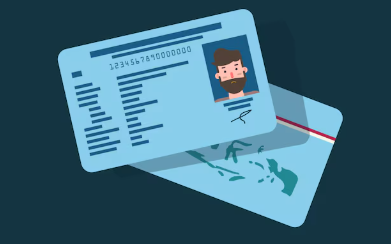Personal loan balance transfers help borrowers move outstanding balances from one loan to another, typically with lower interest rates. The process of transferring a personal loan balance works much like refinancing an existing loan, except the lender pays off the existing loan balance and the borrower keeps making payments to the new lender. This process helps reduce the total cost of borrowing by providing access to better interest rates and terms.
Personal Loan Balance Transfer Interest Rates
When you apply for a personal loan balance transfer, the interest rate you get will depends on several factors.
- Lender
- Credit Score
- Debt-to-income ratio
Firstly, the lender you choose is an important factor. Different lenders will have different interest rates depending on their policies, so it’s important to compare the different rates available before settling on a lender.
Your personal financial situation is a major determinant when it comes to the interest rate that you are offered. Lenders will assess your credit score and debt-to-income ratio to assess your ability to pay back a loan and determine the associated interest rate accordingly. The higher your credit score and the lower your debt-to-income ratio is, the more likely it is that you’ll be offered a lower interest rate.
Lastly, different loans have different types of rates that vary in terms of their fluctuations over time – for example, fixed or variable rates – so be sure to read up on all of these before taking out a loan to ensure that it’s something that you can afford in the long run.
Eligibility Criteria for Personal Loan Balance Transfer
Every lender has his/her own set of rules and criteria that you need to meet in order to qualify for a balance transfer. Here are a few pointers:
- Payment History
- Credit Score
To start, your existing loan needs to be in good standing. That means you must have made all payments in full and on time because loans that are late or fall behind will be ineligible for balance transfers. Additionally, make sure that the amount you want to transfer is within the lending limit that the new loan provider accepts.
Some lenders may also require you to have a minimum credit score, usually around 680 or better, depending on the provider. And some may also look at other factors such as income, current debts, and employment history when deciding whether or not you’re eligible for a balance transfer.
Interest Rates on Personal Loan Balance Transfer
When you apply for a personal loan balance transfer, the interest rate you get will depend on several factors.
- Lender
- Credit Score
- Debt-to-Income ratio
Firstly, the lender you choose is an important factor. Different lenders will have different interest rates depending on their policies, so it’s important to compare the different rates available before settling on a lender.
Secondly, your personal financial situation is a major determinant when it comes to the interest rate that you are offered. Lenders will assess your credit score and debt-to-income ratio to assess your ability to pay back a loan and determine the associated interest rate accordingly. The higher your credit score and the lower your debt-to-income ratio is, the more likely it is that you’ll be offered a lower interest rate.
Lastly, different loans have different types of rates that vary in terms of their fluctuations over time – for example, fixed or variable rates – so be sure to read up on all of these before taking out a loan to ensure that it’s one you can afford in the long run.
Fees and Charges for Personal Loan Balance Transfer
- Prepayment Penalty
- Processing Fee
- Late Payment Charges
Prepayment Penalty
Many lenders charge a penalty for paying off the balance before the end of the loan’s tenure. This penalty can range from 2-4% of the total loan amount or total outstanding principal amount, depending on the lender’s terms.
Processing Fee
Similar to any other loan scheme, there is usually a processing fee that needs to be paid when you opt for a balance transfer. This fee is generally a percentage of the loan amount transferred but can also be set at a fixed rate as specified by your lender.
Late Payment Charges
When you fail to make payments within the specified due date, lenders usually charge an additional late payment fee, which varies from one lender to another. This late payment charge may vary depending on the type of loan you have opted for and could range from 1-3% of the unpaid installment amount, or as per your agreement with your lender.
Process of Applying for a Personal Loan Balance Transfer
Here are the steps to follow when applying for a personal loan balance transfer:
- Compare interest rates and fees associated with each potential lender, as well as any additional requirements or restrictions that may affect your decision.
- Have all your documents ready beforehand, such as proof of income, credit scores, and other financial information that you may need to provide to the lender in order to be approved for the loan.
- You will need to fill out an application form with all relevant information regarding your finances and current debt obligations.
- Once all requirements have been met, you will need to wait for approval from the lender before accessing funds.
All in all, a personal loan balance transfer can be a great way to save money on interest payments if you can find a lender offering lower rates.
Also read: Personal Loans for Housewife



